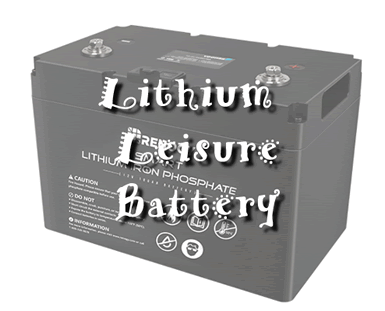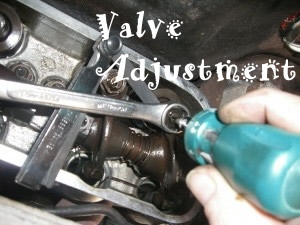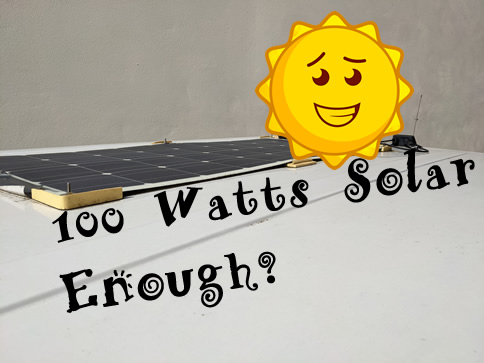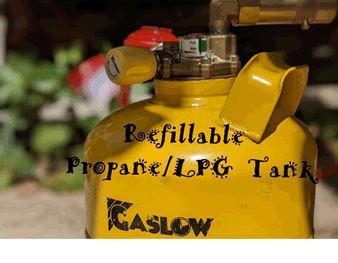I’ve touched on some of the good and bad points of a lithium leisure batteries in my solar article. I promised to dedicate an article to the leisure battery on it’s own. Technology changes all the time but it is rare to see such an advancement as introducing lithium technology in a leisure battery.
What’s a Leisure Battery?
If you own a campervan or have hired one for a trip then you will know that any power you use, doesn’t come from the battery in the engine bay. If this was the case then it wouldn’t be long before your battey was flat. You would come to start the van and there would be no power. The leisure battery is a separate battery that is used for habitation purposes. This battery is isolated from the engine battery so there is no danger of you running down your vehicle battery while camping.
What battery technologies are there?
You have a few options where leisure batteries are concerned:
- Lead Acid Battery
- AGM Battery
- Gel Battery
- Lithium Battery
Lead Acid Battery
This is generally the cheapest and most basic leisure battery you will find. It is quite similar to the battery you already have in your vehicle. The battery that sits in the engine bay to start your vehicle and power its electrical system whilst driving. If you don’t want to damage it, a lead acid leisure battery can only be discharged to 50%. Bear this in mind when purchasing a leisure battery. If it’s a 100ah battery then you only have 50ah before you recharge.
AGM battery
AGM is short for Absorbent Glass Mat. This mat is soaked in the acid, preventing the battery acid from slopping inside. They are a little more expensive than a lead acid battery but are more resilient, charge faster, and require no maintenance. If it’s a 100ah battery then again, you only have 50ah before you recharge.
Gel Battery
A gel battery can be expensive. Its main advantage is that it can be discharged to around 80% before damage is caused. It doesn’t use liquid acid like the other batteries above. The acid has silica added to it making it into a non-spillable gel.
Lithium Leisure Battery
There are so many advantages to Lithium batteries and only one real drawback. Cost is the main drawback. Before you run away when you see the price, you really need to consider what you are actually getting.
How Many Amp Hours Can You Safely Use?
Pretty well 100%. The Renogy Lithium I have, suggests that for maximum life then you shouldn’t go below 10% too often but one thing you will notice is that you now have pretty well double the capacity you had before. It’s unlikely you will need to go anywhere near 10% let alone below it.
How Fast Will It Charge?
This is what is beautiful about lithium batteries. You can charge a lithium battery with up to 50 amps an hour. If you have the right charger then this figure is not unrealistic. You do have to take into consideration the number of amps your alternator or dynamo can provide. I currently use a 20 amp DC to DC charger. While I am driving, this pumps 20 amps an hour into my 100 amp battery. If I drove for 5 hours, this would fully charge an empty battery. It gets a bit better than that though because on sunny days the 100-watt solar panel will push another 8 amps. This makes it a total of 28 amps while driving. This could cut over an hour off the charge time.
Typically the lithium leisure battery will be displaying around 70% on a morning with the fridge running all night and the phones charged. A short 1-hour drive to the beach will see it back up to 100%. The solar panel generally keeps it at 100% for the rest of the day.
If you compare the other battery technologies with these figures you will find that lead acid batteries can only take 10 amps an hour! It will take over 10 hours to charge a lead acid battery to 100%. The fact that it can only take 10 amps an hour means that your solar is wasted while you are driving because your battery just can’t take the extra amps. If your lead acid battery is charged to about 80%, the charge amps have to drop to allow the battery to settle and cool down. This means that your 100-watt solar panel is now wasting about 6 amps because it has nowhere to put them. Read my solar panel article here
What Changes Will You Need To Make For a Lithium Leisure Battery?
There are a few extra expenses you need to go to before fitting a lithium leisure battery. Many suppliers will suggest it it a straight swap but this is unlikely to be the case.
EHU Charger
You will probably need a different charger. A standard lead acid battery charger is unlikely to be suitable. That means the charger used for EHU (Electric Hook Up or shore power) will be unsuitable. Here’s a link to a charger that is suitable for lithium leisure batteries BUT WAIT!
don’t go rushing out to buy one just yet. I didn’t bother replacing my charger and I haven’t had to use an electric hookup yet. My battery absorbs so much of the available charge from solar and the engine running, I haven’t found the need to use electric hook up. Maybe I will replace it one day. At the moment it’s not a priority because I’m just not using enough power to warrant the use of EHU
Split Charger
It’s likely you will need to update the split charger to a dc to dc charger. regular lead acid split chargers could damage a lithium leisure battery. You also need to remember that a standard split charger may only allow about 10 amps through. This is not ideal. Your battery can now take a lot more and charge faster. DC to DC chargers can provide many amps. You do need to be careful not to overload your alternator. I opted for the 20 amp one because with the solar it would give me about 28 amps an hour.
A Little Extra
You may have a shunt for your current leisure battery. This will tell you how much power you have left. They are not 100% accurate. I opted for a monitor screen that plugs directly into the Renogy Lithium battery and gives you a precise read out of the state of charge. This comes straight from the battery management system so is 100 percent accurate. The Monitor is a little bit annoying because it doesn’t stop on the same screen for very long. It cycles through all the info screens. You can use the buttons to select the information you want but then it returns to cycling. It’s not a deal breaker but could be improved upon.
The Best Upgrade
I Have done many upgrades to the campervan. quite a few are based around the leisure battery such as solar and my water heater. The key to all these has been my Lithium battery upgrade. It really does take a lot of the worry out of the power situation. If there is one upgrade that went above and beyond, it’s this one. it just made everything work better and more efficiently. If its an upgrade you are considering then in my experience, go for it!









